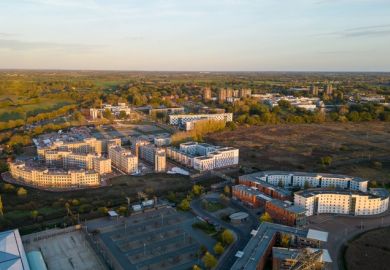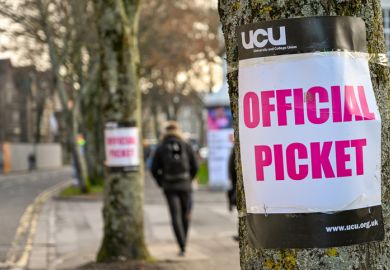The proportion of men in the top pay bracket at UK universities has fallen for the eighth year in a row, analysis shows, but vast gender inequalities still exist at certain institutions and in many fields.
Higher Education Statistics Agency (Hesa) figures show that about 33,300 UK university staff received at least £65,578 in 2022-23 – 33.6 per cent of which were women.
This was up from 32.4 per cent in the top bracket the year before – a metric that has increased every year since the time series began in 2014-15.
However, Jefferson Frank, professor of economics at Royal Holloway, University of London, said headline measures such as these are progressing too slowly because of underlying issues such as discrimination in promotions and pay, and the under-provision of support for women seeking to advance their careers.
Professor Frank said the historical under-representation of women meant that inequality is embedded in the sector, and unless some professors retire or work part-time, it can be difficult to open up new opportunities.
Times Higher Education’s analysis found that more women were in the top pay bracket in 2022-23 than in 2014-15 across the vast majority of UK providers.
The University of Exeter and the University of Stirling both saw the proportion of women earning the maximum salaries increase by 16 percentage points over this time – the greatest improvement of the 67 institutions where the gender was known of at least 100 staff.
Campus resource collection: Wisdom from women leaders in higher education
However, four providers (Northumbria University, Aston University, the University of Hull and Nottingham Trent University) recorded fewer top-paid women than in 2014-15, and Ulster University saw no improvement.
Professor Frank said pay inequality has worsened with the move towards “managerial universities” – with academics often judged on their contributions to the bureaucratic structure, rather than on their research and teaching productivity.
“While this might in the short run have an effect on cutting the gender pay gap…it has a prolonged negative effect on their careers,” he added.
David Bass, director of equality, diversity and inclusion at Advance HE, said that despite longstanding challenges, the UK sector has made progress to narrow the pay gap.
“However, women academics are over-represented in part-time roles, which tend to be lower paid, and senior academic roles are not often offered on a part-time basis,” he added.
“The lack of flexible working arrangements in more senior roles also prevents women from applying or getting promoted and accessing those higher wages.”
The figures also show that gender parity has been achieved in education departments – where women make up 51 per cent of the best paid. All academic fields saw improvements over the eight-year period, with the largest coming in architecture and planning – a 13 percentage point swing.
However, men still make up 83 per cent of the top earners in engineering and technology, and 79 per cent in the biological, mathematical and physical sciences – two fields which saw among the lowest improvements.
Jo Grady, general secretary of the University and College Union (UCU), said institutions should look to universities like Bristol, which agreed a landmark deal to tackle the pay gap.
“Due to years of tireless campaigning by UCU members, the gender pay gap in higher education is closing, however, the pace of change remains too slow,” she added.
Hull said it had increased the proportion of women in the top pay bracket in the last year by investing in professional development, creating new career pathways and peer support networks and strengthening governance and policy.
A Northumbria spokesperson said it has made a strategic commitment to eliminating pay gaps and has increased progression rates for women over the past two years.
Aston said it has made a significant number of senior female appointments over the past 18 months which have yet to be included fully in the data.
Ulster and Nottingham Trent have been approached for comment.
Register to continue
Why register?
- Registration is free and only takes a moment
- Once registered, you can read 3 articles a month
- Sign up for our newsletter
Subscribe
Or subscribe for unlimited access to:
- Unlimited access to news, views, insights & reviews
- Digital editions
- Digital access to THE’s university and college rankings analysis
Already registered or a current subscriber?







